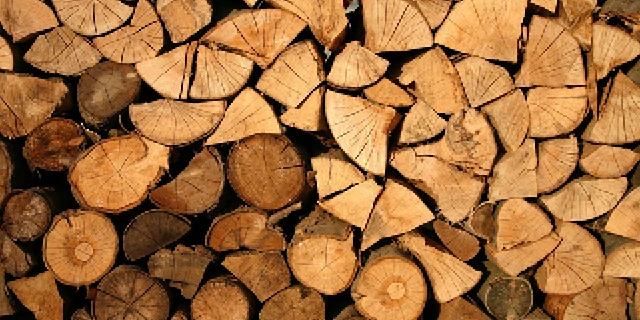Now is the Wrong Time to Buy Firewood
As you transition out of summer and into fall, you’re probably not thinking much yet about keeping your home warm this winter. However, when it comes to firewood, it’s essential to be prepared months in advance. If you haven’t bought green wood yet, it’s probably too late.
Don’t worry – this doesn’t mean you’ll freeze in your home this winter! (Check out Aire Serv, a Neighborly brand, for all things HVAC!) If you want to use firewood to heat your home, you’ll need wood that is properly seasoned and ready to burn efficiently. Learn how to prepare for winter with this Neighborly guide.

Green vs. Dry
Picture this: You’re ready to fire up your fireplace this winter, so you go and chop up some wood in the yard. Is it ready to be burned? Not quite. Green wood is wood that has been freshly cut and is full of sap. The problem? Green wood is tough to burn and doesn’t give off as much heat as seasoned wood. Wood that is “seasoned” means it’s been properly dried and the sap has evaporated. All firewood should have seasoned for six months, so its moisture content is around 20 percent.
When your wood isn’t dried properly, it doesn’t burn efficiently. This causes your fire to be overly smoky, which will create buildup in your chimney. However, don’t write off the green wood! Green wood is cheap, so stock up ahead of time and season it yourself.
Seasoning Survival Guide
You’ve purchased your green wood – what’s next? The key to seasoning can be found in the word “seasoning” itself: season your wood for a season. The best time to buy your firewood is early spring – that way, it should be ready for winter use by October.
To properly season your wood, place it where the sun can warm it and wind can blow through it. When you stack the wood, place it in a crisscross fashion for better air flow. When your wood has finished seasoning, keep it in a woodshed or cover it with a tarp.
Not sure if you’re done drying? The most accurate gauge is to look for checks and cracks in the end grain. You can also hit two dry pieces together – if they’re dry enough, they’ll make a hollow sound. Dry wood weighs less than wet wood, so pick a few up to compare. Finally, you could split a piece of wood to see for yourself – if it’s damp inside, the piece isn’t dry enough.
Storage Solutions
You’ve got your perfectly-seasoned wood, but you’re not quite ready to burn it. Storing your firewood properly is the only way to ensure your wood is preserved well for the winter. Check out the following firewood storage tips:
- Don’t abuse the tarp – A tarp can easily be misused when it comes to storage. Don’t place your tarp on your firewood before it’s perfectly seasoned – the wood needs as much air circulation as possible to try well. Instead, cover the top of seasoned wood with a tarp, but make sure air can still pass through on the sides.
- Stack in the shed – Consider investing in an actual structure to store your firewood, especially if it’s for personal use. Stacking wood helps it dry faster, look nicer and take up less space, and giving it a nice home will keep it safe. Need more ideas on outdoor storage solutions? Check out this helpful blog from Mr. Handyman!
- Close to home – Regardless of how you choose to store your wood, stack it close to your house. Firewood is heavy – don’t make more work for yourself! Remember not to place it directly on the soil, as the wood will rot from bacteria and bugs. Lay down a tarp or stack it on a surface like concrete or gravel.
- DIY rack – Looking for a DIY weekend project? Create your own storage solution with the help of Mr. Handyman! A firewood rack is relatively inexpensive and easy to make – learn how to build one here!
Missed the window for seasoning your own wood? Turn on your heater, or purchase your wood from someone who seasoned in the spring. Looking for more Neighborly advice for your home? Explore our Neighborly Expert Tips page.



 Back
Back

 1 (855) 217-8437
1 (855) 217-8437


